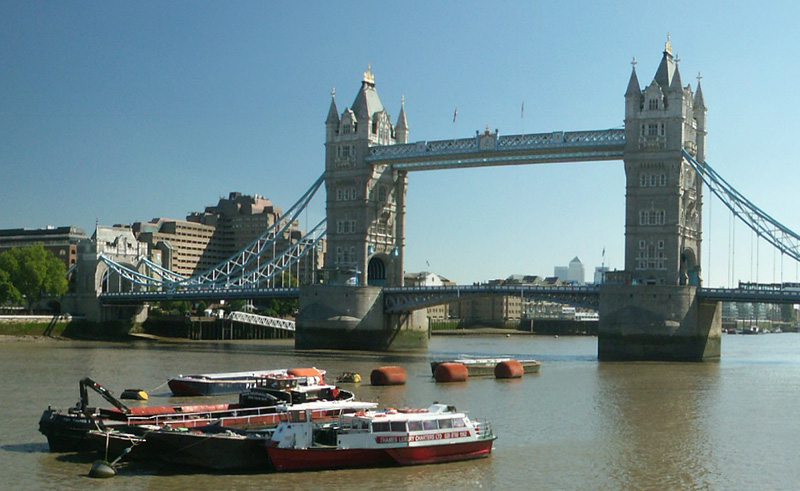
This photo of Tower Bridge in London is part of one of the panoramic images found on the PanoramicEarth.com Tour of London. There are over 100 images taken from around London linked to an interactive map.
Plan your visit to London by taking advantage of these London Hotel Specials or Thomson City Breaks. Get the most of London with these London Guide Books
Tower Bridge is one of the most famous, and most photographed landmarks in London. Just pick up almost any book or brochure and there it is. Tower Bridge is truly iconic as it crosses the Thames next to the Tower of London. As well as being a functioning bridge, Tower Bridge also contains an exhibition about the history of the bridge, and allows you access to the high walkway that spans the two towers, giving a remarkable view of London from the top of Tower Bridge. Access to this attraction is free with the London Pass.
Tower Bridge is often confused with London Bridge, the next bridge up the Thames from Tower Bridge on the way to Westminster. Yet both the construction and function of Tower Bridge are unique for the bridges in London, with two Gothic towers and a raisable span.
But why a raisable platform? Well, in the late 1800’s London still had a functioning port at the Pool of London, which is located between London Bridge and Tower Bridge. However, the demands of commerce and traffic necessitated another bridge across the Thames. After 50 proposed designs and 8 years of planning Joseph Bazalgette's design for a bascule bridge was accepted in 1874. The central 61m (200 foot) span between the two towers was split into two bascules which can be raised to 83° to allow river traffic to pass.
Tower Bridge was steam powered, using steam engines to pump water into the accumulators and the hydraulic raising mechanism. All the machinery for this was housed in the two towers of the bridge. Being built in the Victorian era, naturally elegance and style was demanded to cover the machinery and thus we have the icon of Tower Bridge given to London. In fact the original design gave a medieval form, but was replaced with the current Victorian Gothic form.
When you stand at the centre point of Tower Bridge, where the two bascules meet, give thought to the following: It took 432 workers over 8 years to build the bridge. In so doing they used some 70,000 tons of concrete for the river bed supports, and 11,000 tones of steel in the two towers and the walkways situated near the tops of them. All this infrastructure was then clad in a mixture of Cornish granite and Portland Stone to provide the spectacle we have today. Each bascule weighed over 1000 tons, was counterbalanced within the towers and could be raised to the full height within a minute.
Other attractions near to Tower Bridge HMS Belfast, include The Monument, Winston Churchill’s Britain at War, Vinopolis, Southwark Cathedral and Tower of London. Entrance to all of these London attractions is free to holders of the London Pass. Other nearby attractions include The London Dungeon, City Hall, Hay’s Galleria (for shopping) and the Design Museum. The nearest tube station to Tower Bridge is Tower Hill, next to the Tower of London.

The full panoramic image taken from Tower Bridge can be found on the London tour by PanoramicEarth.com. An enlargement of this photo can be found on Flickr.
For more articles on London see the London Index or select one of the labels at the bottom.

No comments:
Post a Comment